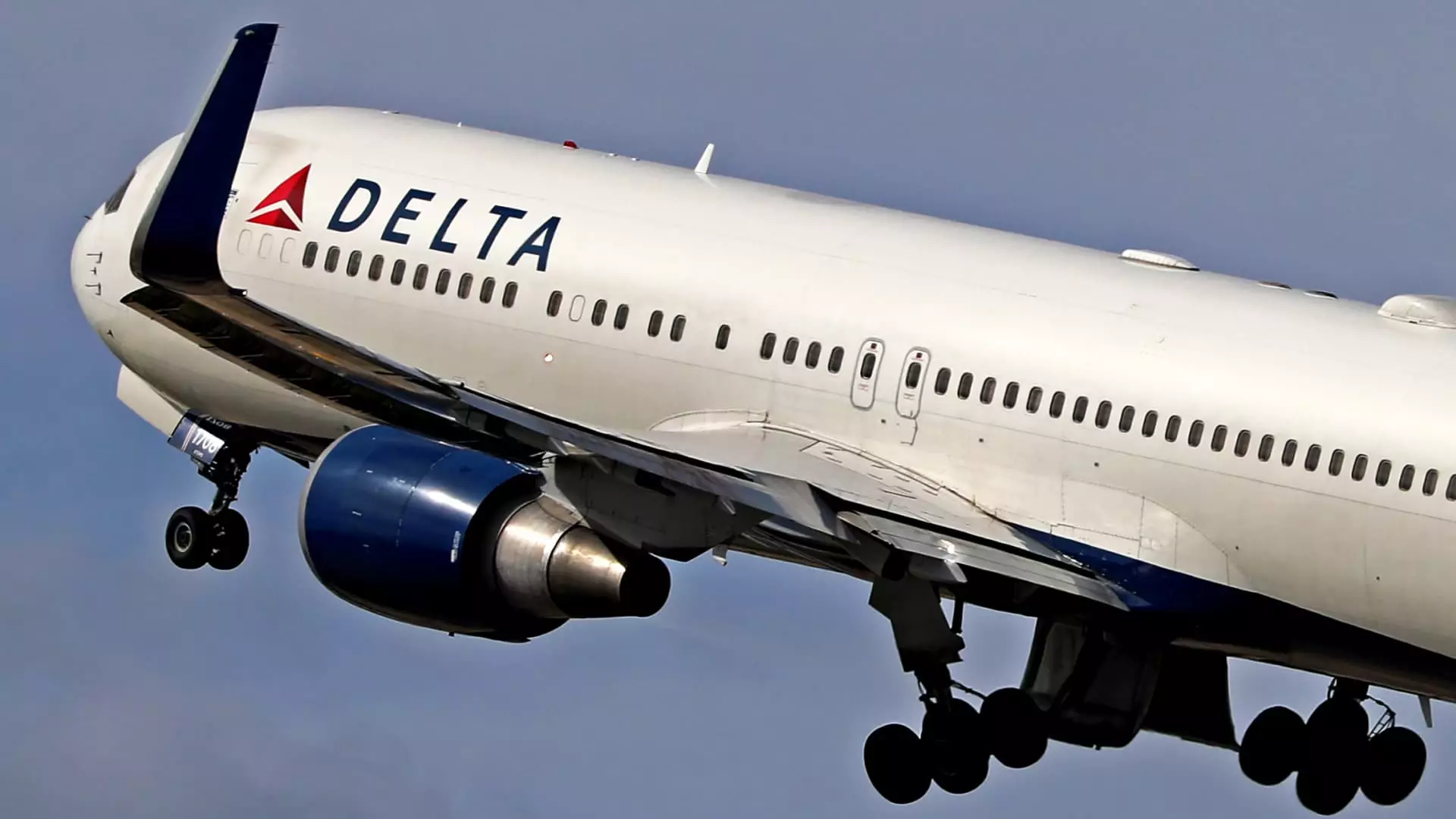The latest tremors in the airline industry are more profound than mere fluctuations in stock prices; they reflect a deeper unease rooted in economic instability and consumer apprehension. Recent reports indicate that airline stocks are facing significant downturns, reflecting Wall Street’s grim outlook on travel demand, which has been exacerbated by geopolitical tariffs and declining consumer confidence. Particularly alarming is the news surrounding major carriers like Delta Air Lines, whose shares have seen a disheartening dip following Jefferies’ downgrade. With such significant shifts in the market, it’s clear we’re witnessing more than just financial metrics; we’re observing a sector grappling with larger forces that threaten its very foundation.
Deteriorating Demand: A Sign of Larger Issues
The downgrade of Delta—once heralded as the gem of the U.S. airline sector—ushers in a new era of skepticism. Jefferies’ drastic cut in price targets highlights a worrying trend: not only is demand for air travel softening, but the highly profitable market segment of cost-sensitive travelers is shrinking. Despite Delta’s optimistic assertions about increasing revenues from premium cabin offerings and airline credit partnerships, the focus must shift to the majority of travelers whose preferences dictate market health. Their hesitance to book flights, particularly due to shaky economic conditions and persisting fears (heightened by recent economic reports), signals a critical juncture for all airlines.
The Ripple Effects of Economic Concerns
Further compounding the issue are the figures released by the Bank of America, documenting a troubling 7.2% decline in airline spending compared to last year. While broader consumer spending on credit and debit cards rose modestly, travel spending sharply declined. This dichotomy is crucial—it paints a picture of consumers who are tightening their belts when it comes to luxury expenditures like air travel. The relationship between household spending habits and perceived economic stability cannot be understated. When people feel insecure about their financial future, leisure travel inevitably becomes a soft target for budget cuts.
A Sector in Crisis: The Numbers Speak Volumes
The NYSE Arca Airline Index’s staggering 18% drop in the first quarter serves as a sore alarm not just for airlines but for all stakeholders connected to this industry. This decline far outpaces the broader market losses indicated by the S&P 500, marking it as the biggest slump since late 2023. Such a downturn raises significant concerns about the long-term sustainability of airlines that struggle with changing economic tides. Even with historical spikes in consumer travel following a pandemic, the delicate fabric of the industry must be re-evaluated in light of these emerging patterns.
Where Do We Go From Here?
As airline executives prepare for a challenging earnings season, the industry stands at a crossroads between navigating immediate crises and devising long-term strategies for recovery. The growing anxieties surrounding travel need not lead to despair, but they do prompt a call for a more adaptive and resilient approach. The question now is whether these airline giants can pivot or whether they will allow the clouds of uncertainty to dictate their fate. The stakes have never been higher; understanding consumer behavior and economic signals is crucial for adapting to this rapidly changing landscape.

